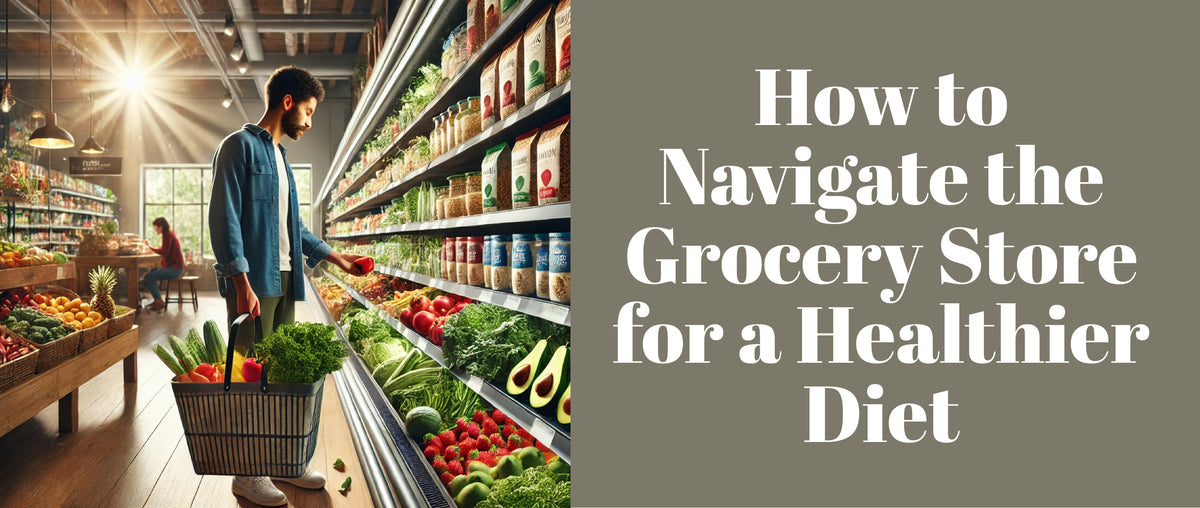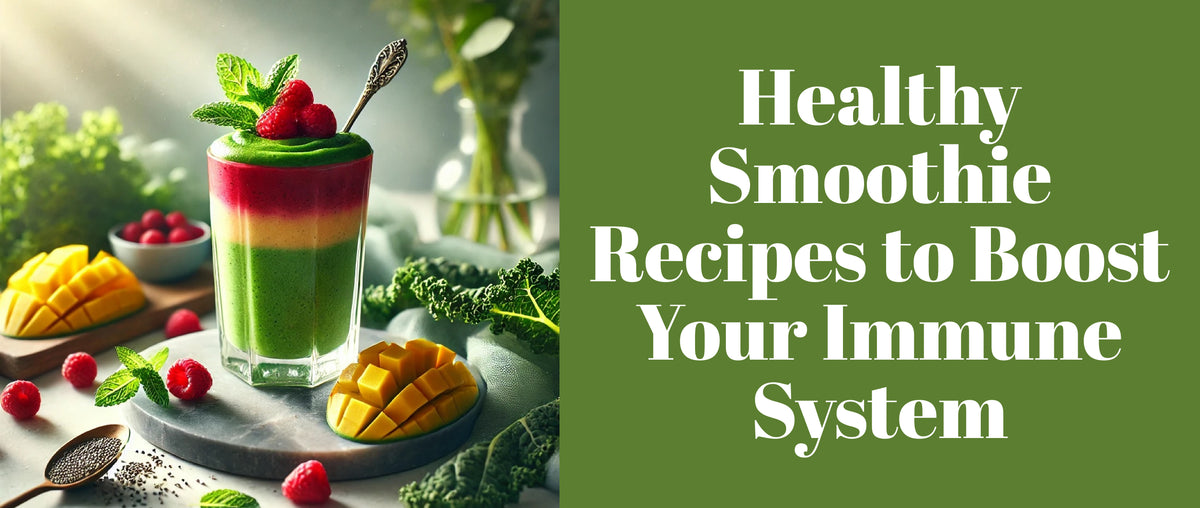How to Navigate the Grocery Store for a Healthier Diet
Eating healthy starts long before food hits the plate; it begins with the choices we make in the grocery store. Understanding how to navigate the aisles with a focus on health and nutrition is essential for those committed to a better diet. From learning about produce sections to choosing the right dairy or dairy-free options, this guide will equip you with essential tips for healthier grocery shopping.
Key Takeaways
- Preparation is key: Always start with a meal plan and shopping list to avoid unhealthy impulse buys.
- Shop the perimeter: Focus on fresh produce, lean proteins, and whole grains.
- Read labels: Understanding nutrition labels helps you make better, informed choices.
- Budget wisely: Healthy eating doesn’t have to break the bank—choose smart options and shop for staple items in bulk.
Preparation Before Heading to the Store
Before entering the store, a few key steps can make all the difference in setting yourself up for healthier, more intentional grocery shopping.
Plan Your Meals for the Week
Meal planning helps you create a structured, balanced diet, saving time and helping prevent the temptation of last-minute unhealthy options. Start with breakfast ideas and work your way through lunches, dinners, and snacks. Consider incorporating plant based cheese , vegan butter, and fat-free butter for healthier alternatives to traditional dairy. This not only keeps your meals balanced but also simplifies shopping by focusing on specific ingredients.
Tips for Effective Meal Planning:
- Focus on balanced meals: Aim for a mix of vegetables, lean protein, whole grains, and healthy fats.
- Consider dietary needs: If you’re vegan or lactose intolerant, adding oat milk and Cashew Butter to your list ensures suitable substitutes.
- Save time: Preparing a grocery list based on your meal plan saves time, keeps you focused, and prevents wandering into less healthy options.

Create a Detailed Shopping List
Having a list is crucial for sticking to healthier choices. A well-structured list helps reduce impulse buying, keeps you within budget, and ensures you have all essentials for your meals. Break your list down by categories like fruits, vegetables, grains, dairy alternatives, and proteins. Add items like Unsalted Butter and Unprocessed Cheese to ensure you’re buying the healthiest options in each category.
Sample Shopping List Categories
| Category | Items |
|---|---|
| Produce | Leafy greens, seasonal fruits |
| Dairy/Dairy-Free | Oat milk, vegan cheese, cashew butter |
| Grains | Brown rice, quinoa, whole-wheat pasta |
| Proteins | Lentils, chickpeas, tofu |
| Healthy Fats | Olive oil, avocados, nuts |
Eat Before You Shop
One of the simplest ways to avoid unhealthy, impulsive purchases is to eat a balanced meal before you shop. Studies show that shopping on an empty stomach can lead to more cravings, particularly for high-fat and high-sugar foods. Eating beforehand helps you focus on nutritious choices like vegan products and fat-free cheese.
Use Coupons Wisely
Look for discounts on staples and healthy foods. Many stores now offer digital coupons and discounts on fresh produce, dairy alternatives, and plant based cheese options. Shopping smarter by utilizing coupons can make healthy eating more affordable without compromising on quality.
Navigating Different Store Sections
Each section of the grocery store has specific items that can help or hinder your health goals. Here’s a breakdown of what to prioritize and what to avoid in each area of the store.
Produce Section
The produce section is often located at the front of the store, filled with a colorful array of fresh fruits and vegetables. Here, you’ll find some of the most nutrient-dense options for building a healthy diet.
- Choose Fresh and Seasonal Produce: Seasonal produce is fresher, often tastes better, and is packed with nutrients. Opt for vibrant, leafy greens, and a mix of colorful vegetables to ensure you’re getting a variety of vitamins.
- Look for Organic Options When Possible: Organic produce is free from synthetic pesticides and fertilizers, making it a healthier option when available.
- Include Superfoods: Items like kale, spinach, and blueberries are known for their high nutrient content, and they’re versatile in a variety of recipes.
Protein and Meat Department
For a balanced diet, the protein department should include options that are both nutritious and versatile.
- Lean Proteins: Opt for lean cuts of meat, fish, or poultry when available. For plant-based eaters, consider tofu, tempeh, or legumes for high-quality protein sources.
- Plant-Based Proteins: Plant-based diets have been linked to numerous health benefits. Including plant based cheese or protein-packed options like chickpeas, lentils, and quinoa can enhance meal variety while providing essential nutrients.
- Healthy Seafood Choices: When shopping for seafood, go for wild-caught fish like salmon, which is rich in omega-3 fatty acids. Avoid breaded or heavily processed fish to keep it as healthy as possible.
Also Read
Dairy and Dairy Alternatives
The dairy aisle is full of options, from milk and cheese to yogurt. For those looking to avoid animal products, many Vegan Products in india offer excellent dairy-free alternatives.
- Oat Milk and Other Plant-Based Milks: Oat milk is a great option for those who are lactose intolerant or prefer dairy-free. It’s creamy, low in saturated fat, and enriched with vitamins.
- Vegan Cheese: There are numerous vegan cheese options available, from vegan mozzarella cheese for pizza to Unprocessed Cheese options. These are free from animal products and often lower in saturated fats.
- Opt for Lower-Fat or Fat-Free Dairy: If you prefer dairy, choose options like fat-free butter or Unsalted Butter for a healthier profile.
Popular Dairy Alternatives and Their Benefits
| Dairy Alternative | Benefits |
|---|---|
| Oat Milk | Creamy, low fat, fortified with B vitamins |
| Cashew Butter | Rich in healthy fats, adds creaminess to dishes |
| Vegan Cheese | Dairy-free, lower in saturated fat |
| Almond Milk | Low in calories, enriched with calcium |
Grains and Breads
Grains can be a healthy staple if you choose the right types. Whole grains are packed with fiber and other nutrients that help support heart health and maintain a healthy weight.
- Whole Grain Options: Brown rice, quinoa, and whole-wheat bread are excellent whole grain choices. They contain more fiber and nutrients than refined grains.
- Look for High-Fiber Breads: When selecting bread, check the nutrition label for fiber content. Whole-wheat bread should contain at least 2 grams of fiber per serving.
- Avoid Sugary or Refined Grains: Steer clear of products with added sugars or highly refined grains, as these often contribute empty calories without nutritional value.
Canned and Frozen Foods
The canned and frozen aisles can be a goldmine for convenience without sacrificing nutrition, but it’s essential to select the right items.
- Low-Sodium, No-Sugar Added Canned Foods: Look for options like canned beans, tomatoes, and tuna, which are great pantry staples. Choose those labeled no salt added or low sodium.
- Frozen Fruits and Vegetables: Often just as nutritious as fresh produce, frozen fruits and vegetables are budget-friendly and have a longer shelf life. Look for plain options without added sauces or sugars.
Snacks and Beverages
The snack aisle can be filled with temptation, but there are also healthy options if you know what to look for.
- Healthy Snacks: Choose snacks like unsalted nuts, seeds, or Garlic Butter popcorn, which is lower in calories and higher in nutrients than traditional options.
- Avoid Sugary Drinks: Instead of sugary sodas, opt for sparkling water or add a splash of oat milk to coffee for a creamy texture without added sugar.
Reading Nutrition Labels Effectively
Understanding nutrition labels can be a game-changer for making healthier choices. While they may seem complex at first, with a few tips, you’ll be able to quickly identify nutritious foods and avoid those with hidden additives.
Key Ingredients to Avoid
- Added Sugars: Foods with added sugars can significantly increase calorie intake without adding any nutrients. Watch out for ingredients like high-fructose corn syrup, cane sugar, or anything ending in -ose.
- Trans Fats: Trans fats, often listed as partially hydrogenated oils, are linked to heart disease and other health issues. Opt for items labeled zero trans fats.
- Sodium: Excess sodium can lead to high blood pressure and other health concerns. Look for low-sodium options, especially in canned and processed foods.
How to Interpret Daily Values and Servings
Each nutrient listed on a food label includes a daily value percentage. These percentages are based on a 2,000-calorie diet, so you may need to adjust based on your specific needs. Key nutrients like fiber, vitamins, and minerals should have higher daily values, while ingredients like sugar, sodium, and fats should be limited.
For instance, if you’re choosing parmesan cheese India or a mozzarella cheese block to add to recipes, check the sodium and fat content per serving. Likewise, opting for fat-free butter instead of regular butter can significantly reduce saturated fat intake.
Spotting Hidden Sugars and Fats
Some products are marketed as low-fat or sugar-free, but they may contain hidden sugars and unhealthy fats to improve flavor. Look out for ingredients like corn syrup solids or palm oil in snacks, and consider plant-based cheese alternatives that are often lower in saturated fat.

Tips for a Budget-Friendly, Healthy Shopping Experience
Eating healthy doesn’t have to be expensive. With a few simple strategies, you can make nutritious choices that support your budget.
Buy in Bulk for Staple Items
Certain pantry staples like whole grains, lentils, and canned beans are more cost-effective when purchased in bulk. Not only do these items last longer, but they also serve as versatile ingredients for a variety of meals. Consider buying Oat Milk and vegan cheese in larger sizes if they’re regularly part of your diet.
Consider Store Brands for High-Quality, Lower-Cost Options
Many grocery stores offer their own brands of healthy products, which are often just as nutritious as name brands but at a fraction of the price. Items like garlic butter or unsalted butter are available in store brands and can enhance your recipes without the high cost.
Choose Frozen Over Fresh for Certain Produce
Frozen fruits and vegetables are budget-friendly, nutrient-dense, and can be stored for long periods. They’re a great choice for those looking to save while still including essential nutrients in their diet. Add frozen blueberries to smoothies or mix frozen spinach into pasta dishes for added nutrients without the fresh-produce price tag.
Budget-Friendly Healthy Shopping Tips
| Strategy | Benefit |
|---|---|
| Buy in Bulk | Saves money on pantry staples |
| Opt for Store Brands | Often same quality at a lower price |
| Choose Frozen Produce | Long shelf life, retains nutrients |
| Look for Discounts on Health Foods | Reduces cost on staples like vegan butter |
Post-Grocery Shopping Tips
Your grocery shopping efforts don’t stop at the checkout. Once home, certain practices can help you maintain a healthier diet.
Storage Tips for Freshness
- Separate Ethylene-Producing Fruits: Apples, bananas, and avocados produce ethylene gas, which can ripen other produce faster. Store them away from ethylene-sensitive items like leafy greens.
- Keep Dairy and Alternatives Chilled: Store items like mozzarella cheese and Unsalted Butter in the coldest part of the fridge to preserve freshness.
- Freeze Items for Later Use: If you’ve bought bulk items like vegan cheese or oat milk but won’t use them all right away, freezing can extend their shelf life.
Meal Prepping to Stay On Track with Your Diet Goals
One of the best ways to keep up with healthy eating is to meal prep. Take a few hours each week to plan and prep meals, ensuring you have nutritious options ready to go. Prepare ingredients like cut veggies or pre-cooked grains for quick assembly during the week.
- Batch Cooking: Make large portions of staples like grains, beans, and roasted vegetables that can be mixed into different meals.
- Healthy Snacks on Hand: Keep items like chopped fruits, Cashew Butter packets, and homemade fat-free cheese slices prepped and stored for easy snacking.
- Portion Control: Meal prepping allows you to portion out your food, which can prevent overeating and ensure balanced meals.
Conclusion
Navigating the grocery store with a focus on health doesn’t have to be challenging. With careful planning, label-reading skills, and a solid understanding of each grocery section, you can transform your shopping habits to support a healthier lifestyle.
Whether you’re looking for vegan alternatives like vegan butter and plant-based cheese, or healthier versions of classic ingredients like unsalted butter and fat-free cheese, the key is knowing what to look for and making intentional choices. Stick to your shopping list, prioritize whole and minimally processed foods, and use the tips above to make each grocery trip a step toward a healthier diet.
Do you enjoy vegan food? We have a list of vegan restaurants in India to help you find delicious options in your area!










